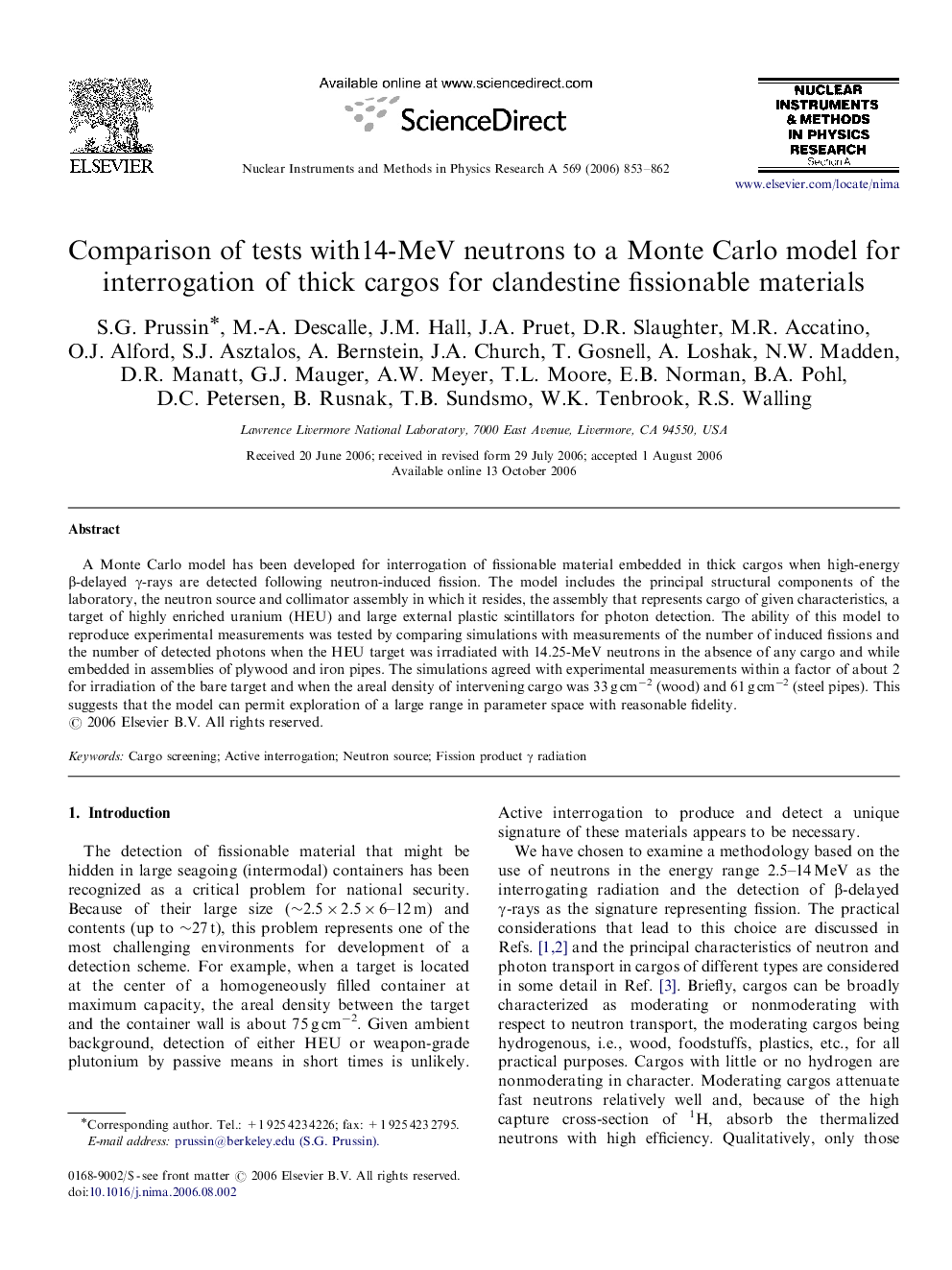| Article ID | Journal | Published Year | Pages | File Type |
|---|---|---|---|---|
| 1831969 | Nuclear Instruments and Methods in Physics Research Section A: Accelerators, Spectrometers, Detectors and Associated Equipment | 2006 | 10 Pages |
A Monte Carlo model has been developed for interrogation of fissionable material embedded in thick cargos when high-energy β-delayed γ-rays are detected following neutron-induced fission. The model includes the principal structural components of the laboratory, the neutron source and collimator assembly in which it resides, the assembly that represents cargo of given characteristics, a target of highly enriched uranium (HEU) and large external plastic scintillators for photon detection. The ability of this model to reproduce experimental measurements was tested by comparing simulations with measurements of the number of induced fissions and the number of detected photons when the HEU target was irradiated with 14.25-MeV neutrons in the absence of any cargo and while embedded in assemblies of plywood and iron pipes. The simulations agreed with experimental measurements within a factor of about 2 for irradiation of the bare target and when the areal density of intervening cargo was 33 g cm−2 (wood) and 61 g cm−2 (steel pipes). This suggests that the model can permit exploration of a large range in parameter space with reasonable fidelity.
